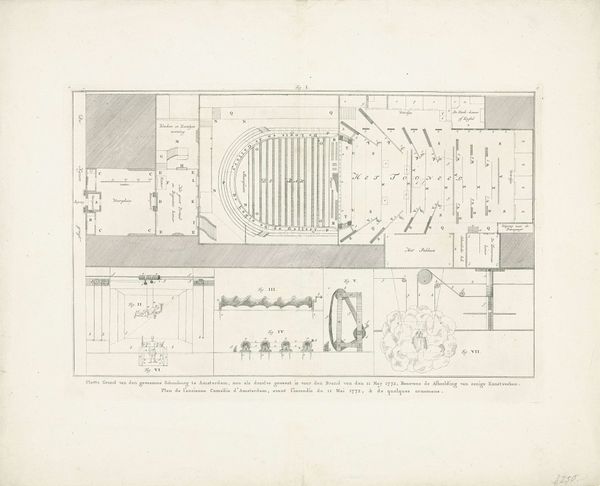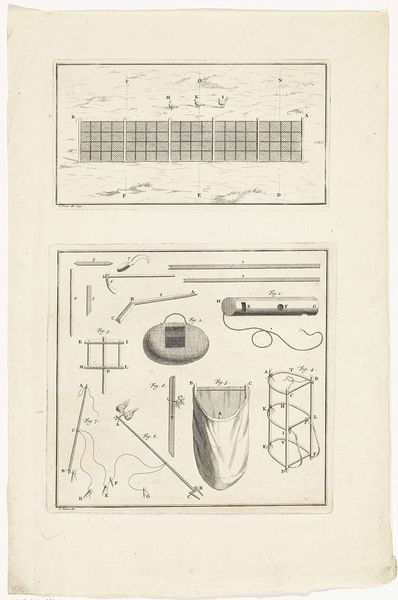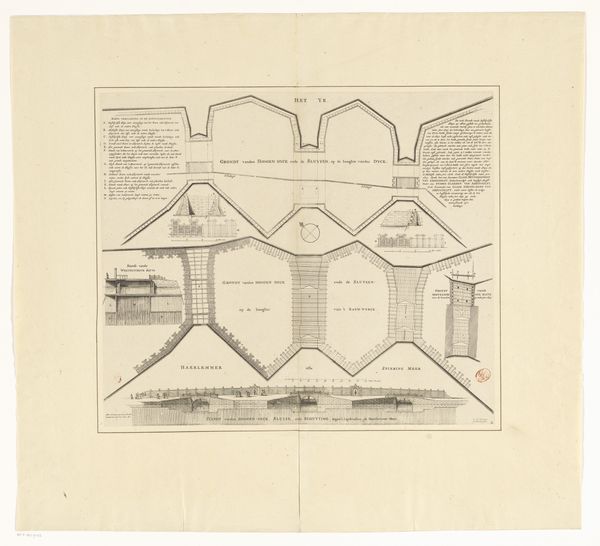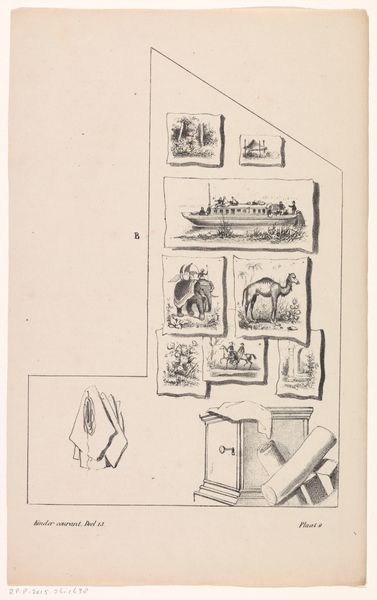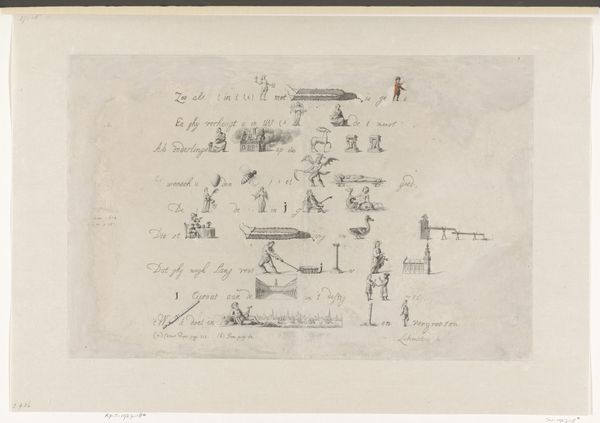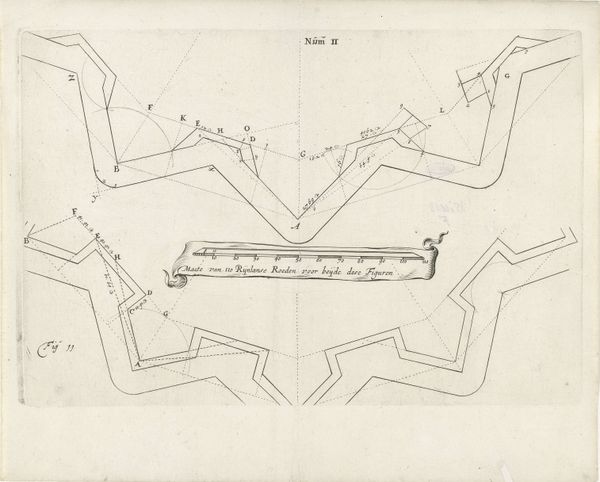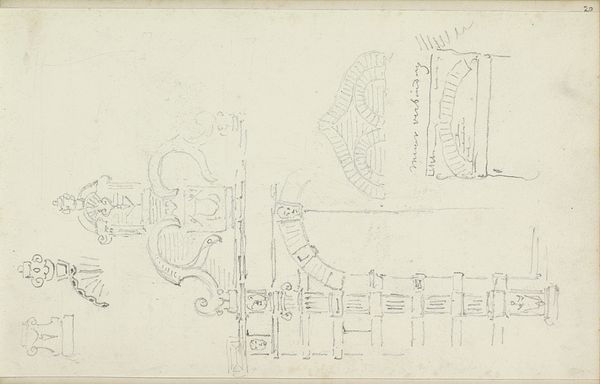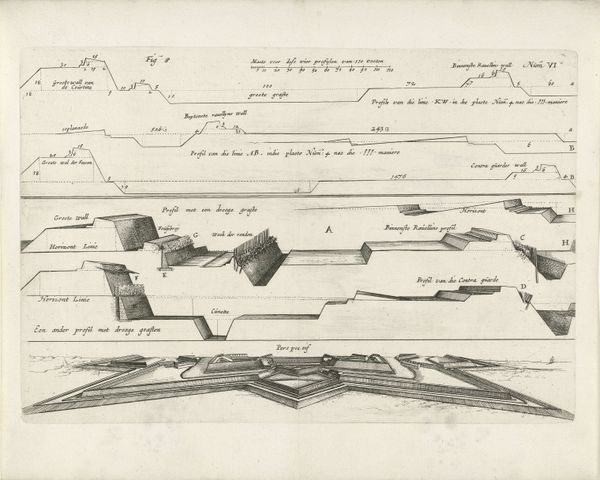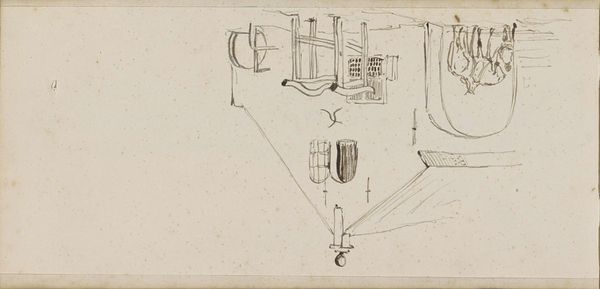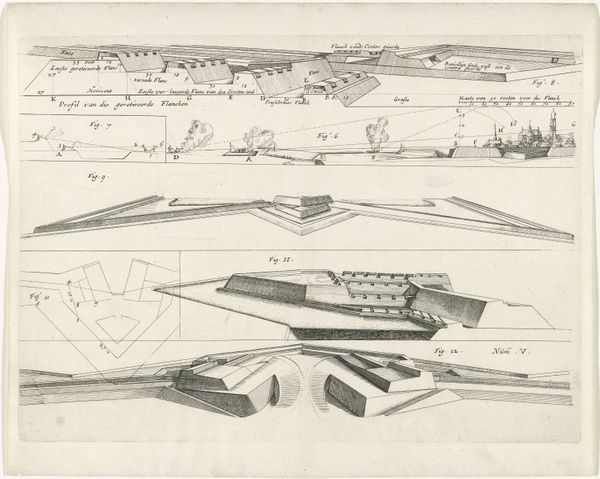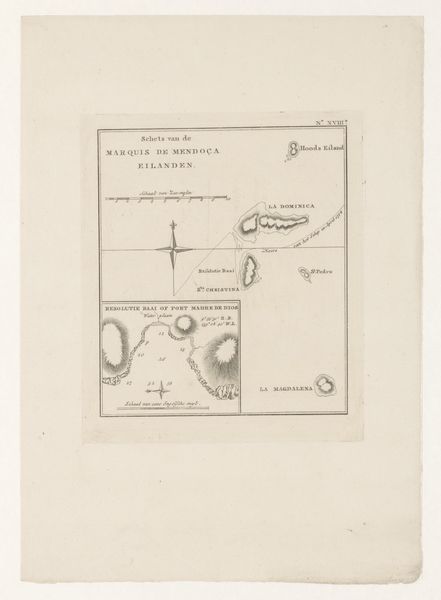
Dimensions: height 260 mm, width 400 mm
Copyright: Rijks Museum: Open Domain
Curator: Here we have "Rijtuigonderdelen," an ink drawing rendered in engraving style sometime between 1740 and 1758, by an anonymous artist. Editor: My initial thought is: precise beauty! There's an order and clarity here that's deeply appealing. Each element is delineated with such clean, elegant lines, even though the subject is quite functional. Curator: It's an intriguing peek into the aesthetics of transportation. This drawing meticulously catalogues the individual parts required to construct a carriage. Note the level of detail applied to components, like ornate handles and bracing. Editor: Exactly. It strikes me that while documenting practical components, the artist imbues each object with a certain grace. Are they glorifying these everyday items? Showing the mechanics of design? Curator: In its time, the visual representation of technology served many roles. It was, of course, a crucial step in the manufacturing process, for practical and historical purposes. Before mass manufacturing, drawings served as guides for individual workshops. Also, the aesthetic choices made by draftsmen can elevate documentation into works of art themselves, fitting into Neoclassicism of the day. Editor: It is interesting to view these objects devoid of their original environment and context, to look at each as sculpture in its own right. How would a drawing such as this affect contemporary designers, I wonder? Curator: In the grand scheme, artworks like this give historians a granular view of daily life. You start to see patterns emerge in commerce, technological evolution, even status symbols of the era. Beyond the drawing itself, studying these carriages provides insight into social dynamics. Who commissioned them, what materials were considered high status, how design influences behavior... Editor: And the notion of an aesthetic underpinning something utterly practical. We expect technology to be about pure utility; this shows an artistic lens operating in conjunction with the construction itself. It invites me to look for beauty in design, wherever it may be. Curator: Precisely, and that’s why this piece has continued to spark discussion about art and industrialization. It really goes far beyond mere documentation.
Comments
No comments
Be the first to comment and join the conversation on the ultimate creative platform.
